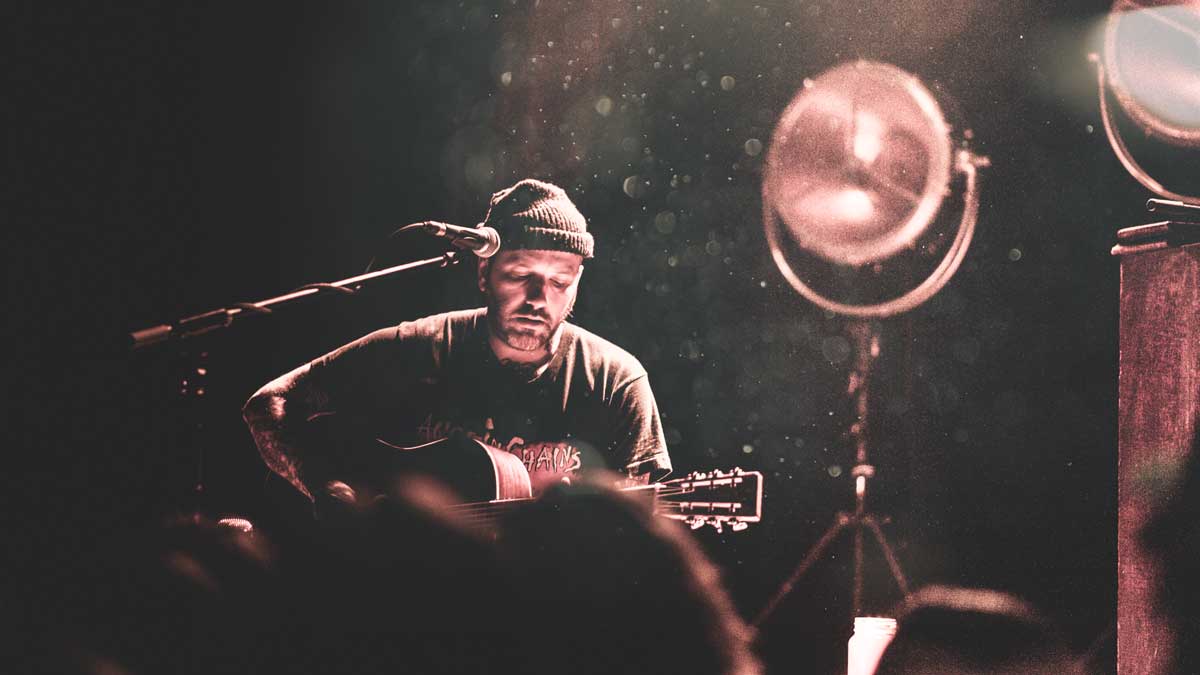
Dallas Green may already have a new studio album close to completion, but he’s reflecting on 12 years under his solo career with City And Colour for live record Guide Me Back Home - and it’s become a testament to creating something positive from a negative time back in 2016.
“The idea came for a couple of reasons,” he explains to us while home in Toronto. “Specifically, I was watching the American presidential election, just like most of the world and whether you agreed with it or different, I think everybody was a little bit shocked by how full of madness it was.
“And I thought to myself, 'Do you know what I’m going to do? I’m going to see if I can book a really long tour of my country and go and try and play a lot of small towns and just kind of try and figure stuff out.'”
I don’t want to call it a greatest hits, but it is almost like a best of record because it’s not just me playing new songs
Accompanied by C&C bandmate Matt Kelly on tenor guitar and keys, Dallas played intimate shows in small towns on the trek to loyal fans and curious locals. The 20 songs on Guide Me Back Home were all taken from different shows and showcase Green’s voice and custom Martins, a Kay and Gretsch Rancher in stunning intimacy - especially on the newly released triple LP edition. Deciding to record the shows allowed it to become more than was ever intended…
“I don’t want to call it a greatest hits, but it is almost like a best of record because it’s not just me playing new songs,” says Dallas.
“It’s me as a 38-year-old man playing songs that I wrote when I was 20 years old. So you get to hear this evolution in my voice, and the playing and the songs. It’s become a lot more than I what I guess we set out to make it, which was literally just to document it and see what would come of it.”
Dallas was so inspired by the tour he ended up writing what will become City And Colour’s next record, already tracked and due next year.
Want all the hottest music and gear news, reviews, deals, features and more, direct to your inbox? Sign up here.
“Doing that tour helped clear my head and open my mind up,” he tells us. “Every once in a while you need reminder of why you’re doing it and what you love about it.”
Read on as we find out more about this landmark in Dallas’s journey as City And Colour, and what the future holds, too…
Was the idea of the solo tour fairly spontaneous for you?
“Yeah, I’d put out the record in 2015 and toured in a lot of the latter half of 2015 and most of 2016. I had a few dates booked, festivals and stuff for the summer of 2017 but I was kind of winding down the album cycle, I hadn’t written many new songs and I kind of didn’t know what I planned on doing.
“For me, I don’t really do well with taking a break. So for me it was a way to keep busy and be out there and still get to sing, play and hang out with my guys. Just try to figure it out. So that’s how it started, and as things progressed as far as booking it and all that, we thought, 'Well, why don’t we just try and record every show and see what can come of it,' and here we are.”
There’s always been a healing quality to your songwriting and music; did this tour remind you of that relationship with the fans more than ever?
I’m lucky that I’ve been able to write a bunch of songs about my feelings and sing them, and that other people are okay with listening to that
“Yeah, I think so. I use the music for that as well, my own healing I guess. I’m lucky that I’ve been able to write a bunch of songs about my feelings and sing them, and that other people are okay with listening to that, too.
“So for me taking a break from it doesn’t help, so singing the songs on a night-to-night basis is always a cathartic process to me and then the idea to go and play all these towns I’d mostly never been to was just to see who else was out there and maybe if there was a bunch of people in these towns who had driven hours and hours to come and see me play in a bigger city, maybe it was time for me to go and see them.
“The shows were rather small. We’re not talking about 1,000 capacity venues, more like 200-seat tiers and things like that. What I found was that there were a lot of people there because they were in the town. It wasn’t just filled with people who knew the music; it was people who thought, 'Well, let’s go and see what this is all about.' And that was nice too because I was able to play for people that maybe had been following me for a while but also sit and play for other people who had never really had the chance to hear it or given it a shot before. So it was kind of a multi-faceted experience.”
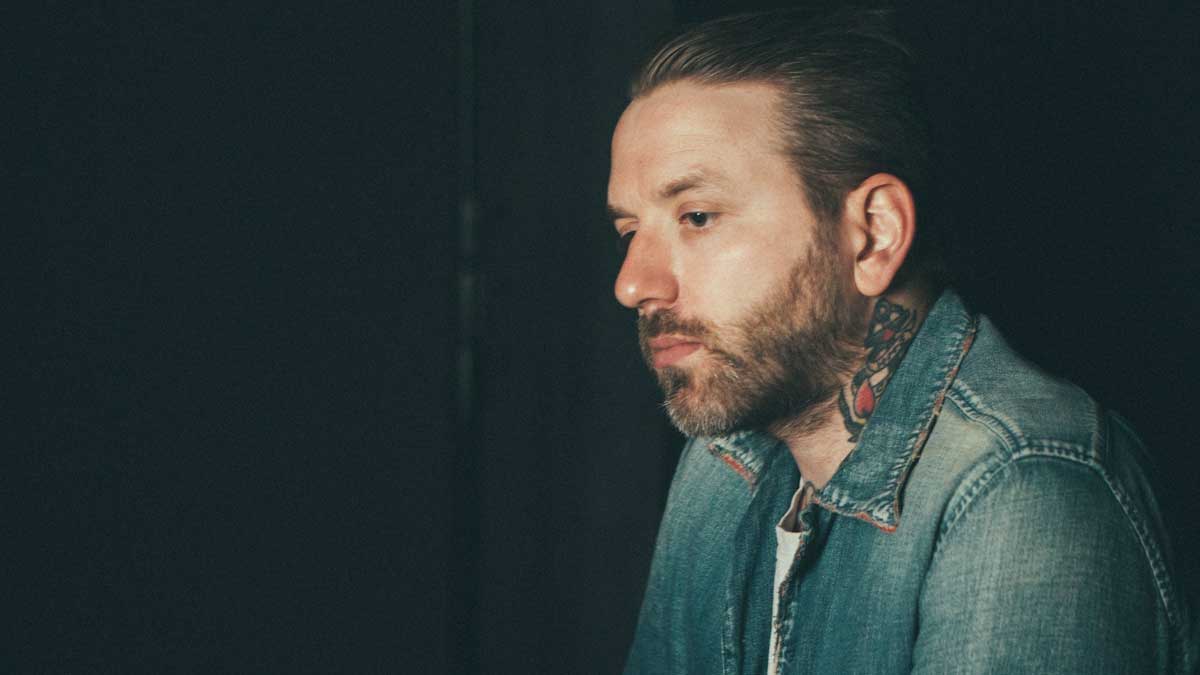
You were accompanied by Matt Kelly from the C&C line-up, but what was it like for you as a musician being exposed onstage as a player and a singer?
“People always ask me the difference between playing an Alexisonfire show where it’s as loud as it can possibly be and people are going crazy, and sweating and screaming and bleeding and all of that. The difference between them and being as quiet as you can possibly be, where you can barely hear anybody breathe. And for me, I am very lucky to have been able to experience both things, but I also think it’s almost the exact same amount of energy in the room; it’s just displaced in a different way, if that makes sense.
“So for me there was was something about this tour, too, that reminded me of the very beginning of my journey as a singer and songwriter playing in my hometown and the surrounding areas with just my guitar, hoping people would quiet down and listen to it.
“To find myself after all these years still doing it and now in these rooms where people are being as quiet as they can be so they can listen, it’s a really beautiful experience. And I really thrive on moments like that. It’s not nerve-wracking or scary for me; I can close my eyes and be in my living room or basement and just try to sing and, for lack of a better expression, just kind of lose yourself in it and hopefully when you open your eyes at the end of the song you’ve done something worth listening to.”
How do you feel that you’ve changed as a guitarist since the start of your solo journey, especially on the acoustic side?
I feel like I will always play a certain way. At some point I’ve realised I will always be sort of limited to a degree on the guitar
“It’s interesting, I don’t know if I’ve changed too much. I feel like I still play a certain way and I feel like I will always play a certain way. At some point I’ve realised I will always be sort of limited to a degree on the guitar.
“But I think that the thing I’ve maybe learned and evolved in is because of my singing; my singing has evolved so much I think from when I was a young kid that I think my guitar playing has [too]. You brought it up there, I’ve really learned how to let the space be there for my voice and it’s the interplay between playing a singing that’s what I hope I’ve figured out the most over the years.”
That can be a subtle concept for some players to learn, the idea of a softer approach, especially on an acoustic. That really comes across on these recordings…
“It really helped that in the songs where there’s two guitars: Matt Kelly is playing an old four-string, an old Martin tenor, so even when there’s another person playing I feel like there’s a real gentle approach to the recordings. Even when it’s me lightly playing a six-string and when it’s him almost playing lead lines, almost like a mandolin. It’s not just two guitars bashing away; there’s some really nice interplay, I think.
“That might go back to how the venues were and how quiet they were. We din’t need to make too much racket to take up all that room. And with the the recordings of that Karl [Bareham], who produced the record, did such a good job of capturing the nuances of it. Until the crowd clap at the end, you can lose yourself in that and not realise it’s a live recording which I think is pretty spectacular.”
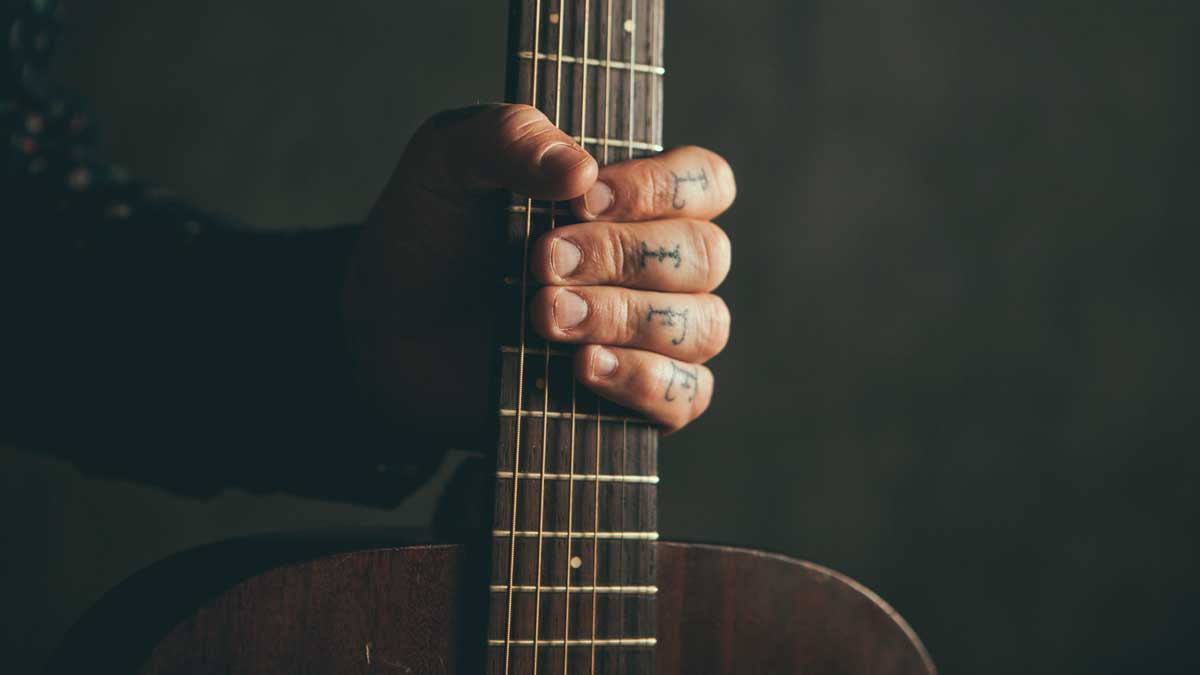
A huge part of that is the guitar sounds - what were your go-to guitars, and what preamp and mic’ing systems were you using?
“My two main six-string guitars are Martins. One is custom-built; I was a Martin ambassador for a while and they built me a guitar. It’s a slotted headstock model but it’s not a parlour or nylon-string guitar. It’s smaller-bodied and the neck’s at the 12th fret. That’s my main acoustic, and the other one is a newer one from the Custom Shop, a D-45. I used that on a couple of songs. But mostly it’s the custom Martin.
“On one, maybe two songs, I have this really old Kay acoustic, I don’t even know what the model is, also with a slotted headstock that I found in a shop here in Toronto about 12 years ago. I’ve never really seen another one like it but I keep that one tuned a whole step down on What Makes A Man and Against The Grain. It’s tuned C to C so I can play really low bassy-sounding acoustic but I can sing really high over it. I feel that’s always a nice juxtaposition.
I run the Gretsch Rancher through a little solid-state Vox combo and make some weird sounds with it. You can almost make it sound a little bit like a Rhodes
“I run them through Avalon DIs and I have a little pedalboard and occasionally I’ll put tremolo and reverb and delay on the acoustic live because it’s fun to do that once in a while. Matt Kelly had the high more lead acoustic with the four-string tenor, and then there’s a couple of electric guitar moments where there’s not too much going on, but I have this weird… I don’t know if you saw it but a couple of years ago Gretsch made this model called the Rancher? It’s basically an acoustic with a Bigbsy on and a Filter'Tron. It’s a very strange beast, but I think it’s really cool. I run it through a little solid-state Vox combo and make some weird sounds with it. You can almost make it sound a little bit like a Rhodes at times if you put on enough effects. Then we rented a bunch of nice mics to record with.”
It’s great to hear you covering Elliot Smith’s Twilight; is that a song you’ve always been drawn to?
“That’s my favourite Elliot Smith song, and when I made my last record I released a couple of singles with some covers on the b-side and one of them was Nutshell by Alice In Chains and one of them was Twilight by Elliot Smith. I didn’t plan on doing that song live, but one night backstage I was playing it and Matt Kelly just started joining me on the tenor. We whipped up such a nice version it seemed like we should start playing it every night and when we got the recording back it felt like it needed to be there.”
You mentioned the experience of playing on your own in the early days and hoping the crowd would be quiet enough to listen; do you have any tips for players out there dealing with that kind of challenge now?
“Well, I guess what I started to do is I just played electric guitar. I played solo acoustic music before we started Alexisonfire. When I started doing shows in the early days it was still quite raucous and I’d be playing at the bar and half the crowd would be maybe kids who liked Alexis and half would just be people at the bar. So it was quite loud.
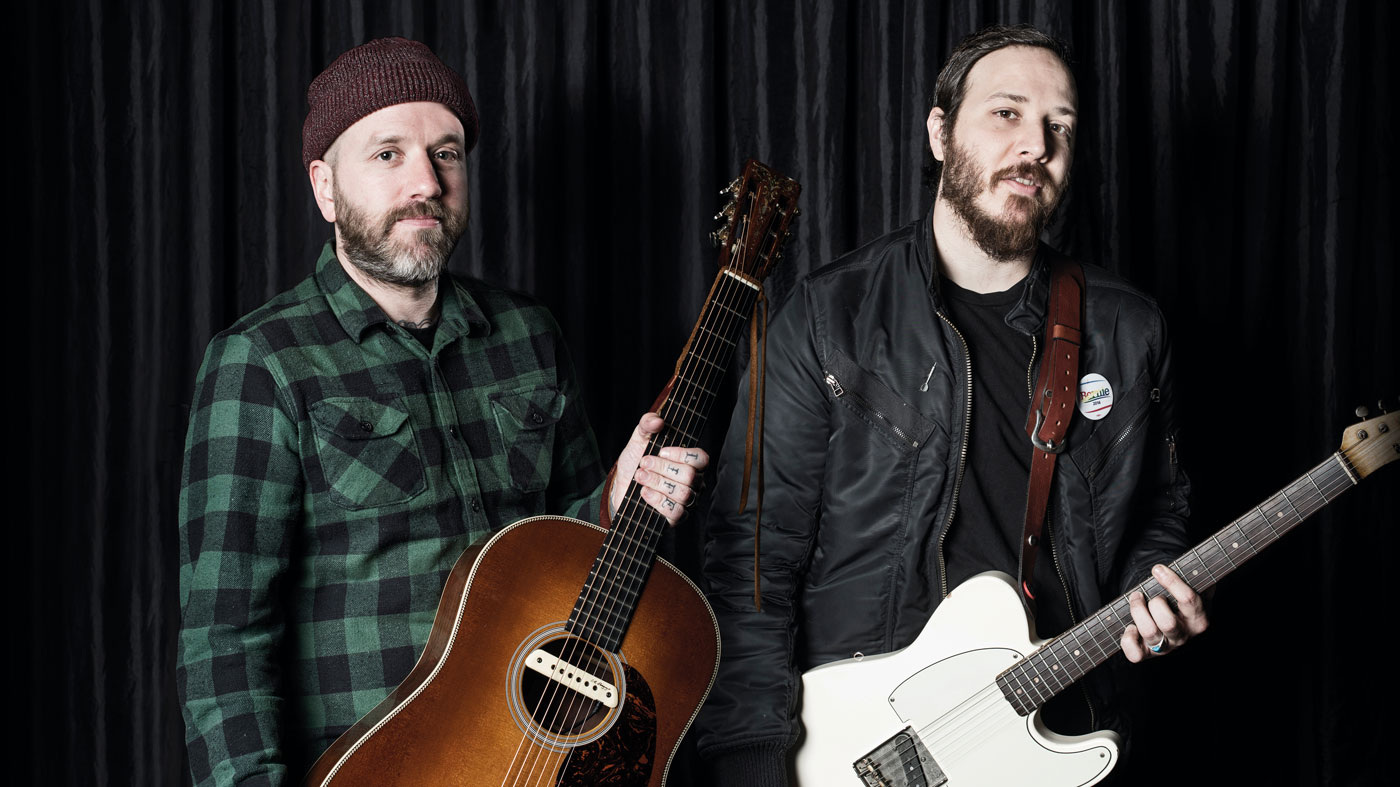
“What I started to do is I’d play acoustic but I’d also bring an electric and a little combo amp and I’d switch back and forth. If I started getting frustrated with the talking I’d plug in an electric guitar and play a couple of songs on that, get a little louder and have that moment to say, 'Okay, I’m going to do this for me, and if they quieten down you can go back to the acoustic.' But if even if you don’t you can bash a couple out, get them out of your system and really, you’ve just got to deal with it and hope people will quieten down and listen.
“I’m not one to say 'look at the crowd' because I rarely look at the crowd - I always sing with my eyes closed - but if you can look and find a few people in the audience and tell they’re actually listening, that does a world of good.
“You have to think in broader terms as a musician, a singer and a songwriter. You’re not going to please everyone and you can only hope at least someone else will pick up what you’re putting down. That’s what I always used to do and still do to this day for myself and just hope somebody gets it. That will get you to the next song and get you to the next show, get you through the next day really.”
You’ve posted some pictures from the studio over the last couple of months, working on the next City And Colour record - did the experience of the solo tour feed into that and inspire you to write when you got back?
Every once in a while you need a reminder of why you’re doing it and what you love about it
“Yes, it really did. It was a combination of a few things. I had a few new songs, but I hadn’t been able to write anything new. I don’t want to say it was writer’s block; I’m not one to force trying to write. When it’s not happening, I just kind of let it be and hope it’ll come back round. Doing that tour helped clear my head and open my mind up.
“A few months later, I ended up going back on tour for real with the band. Every once in a while you need a reminder of why you’re doing it and what you love about it. Then the ideas started flowing a bit more, and then late last year I produced a record by a guy called Ben Rogers. You’ll hear about that soon but making that record really helped fire things back up, and it was really all of last year that led to me writing pretty much all the songs for this record I’m going to finish up next week, actually.”
So, it’s quite far along then?
“We’ve got all the songs tracked and now we’ve got one more session to tie up loose ends and then we’ll go into mixing and mastering. The thing with this record, too, is I’d never really made a record in this way in pieces. Usually when I write a bunch of songs I’m going to book two weeks in a studio and I go out and make the record.
“Because all these songs appeared at once and I hadn’t really planned on making a record this year, I had friends who were helping me produce it. We said, 'Well, let’s just record it when we can and if it goes well we’ll have a record at the end of the year when we didn’t think we were supposed to, and if it doesn’t go well no-one will ever hear it! So here we are, almost finished it. I’m pretty excited about it as well.”
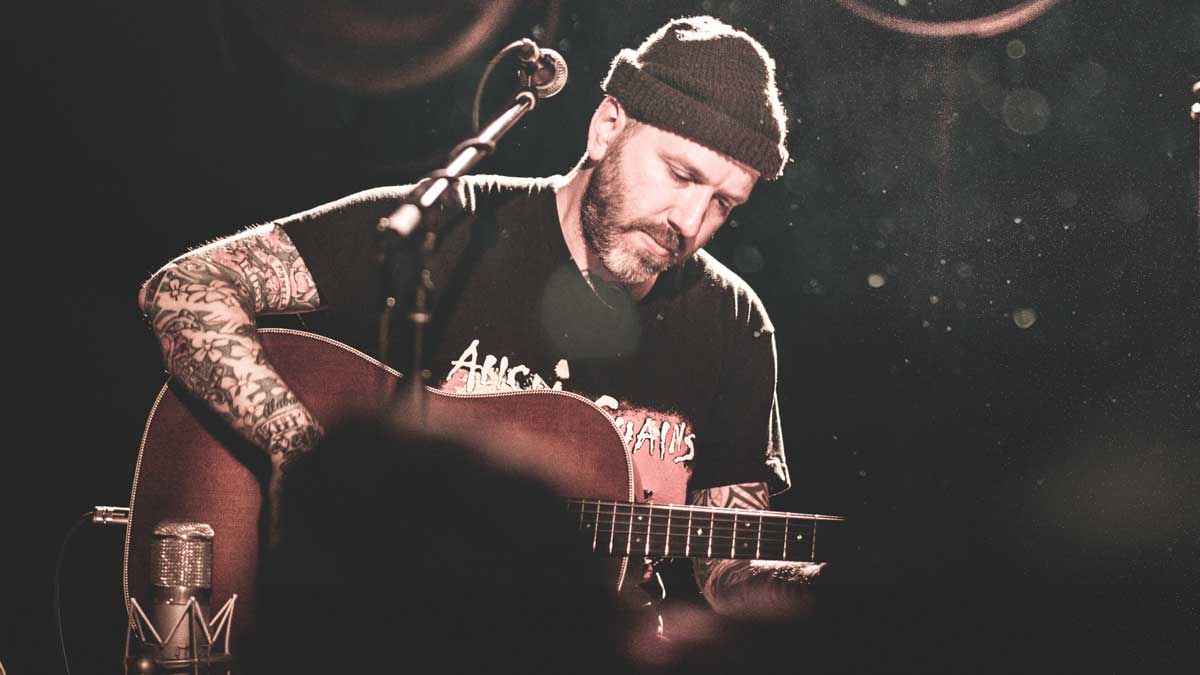
So, the tour really allowed an album to be created sooner?
“I think doing the tour and then recording the shows and this becoming a project, it was a way to sort of have a little bit of retrospective on the longevity of this crazy ride I’ve been on.
“And I think working on the record with Karl and then mixing it into this thing you are now listening to was a way to say, 'Okay, I don’t need to worry and stress about not making another record. I’ve made a lot of music in the last 10, 15 years.' In doing that it kind of cleared my mind a little bit, and allowed new ideas to start flowing through.”
You mentioned producing: is that something you’d like to continue and do you see it as interlinked with your new label Still Records?
“Yes, exactly. I’d never produced anything but music of my own, whether that was co-producing with Alexis or doing all my records, I’d thought about doing it [for other artists] but nobody had ever asked me and I wasn’t going to start putting myself out there as a producer.
“But my friends in this band asked me to help, and myself and Karl, who produced this record and my last City And Colour record. We had a great time and I think the record that we made is really fantastic. It’s definitely something I’d like to do.
“That’s the thing with Still Records: it’s a way for me to put my own music out with a little bit more of a focus on that. But also, Ben’s record is going to come out on Still. It’s a way to get involved with other sides of it. And maybe, too, as I get a bit older, maybe try not to tour myself into the ground as much as I do. Like I said earlier, it could be a different displacement of the energy.”

Rob is the Reviews Editor for GuitarWorld.com and MusicRadar guitars, so spends most of his waking hours (and beyond) thinking about and trying the latest gear while making sure our reviews team is giving you thorough and honest tests of it. He's worked for guitar mags and sites as a writer and editor for nearly 20 years but still winces at the thought of restringing anything with a Floyd Rose.